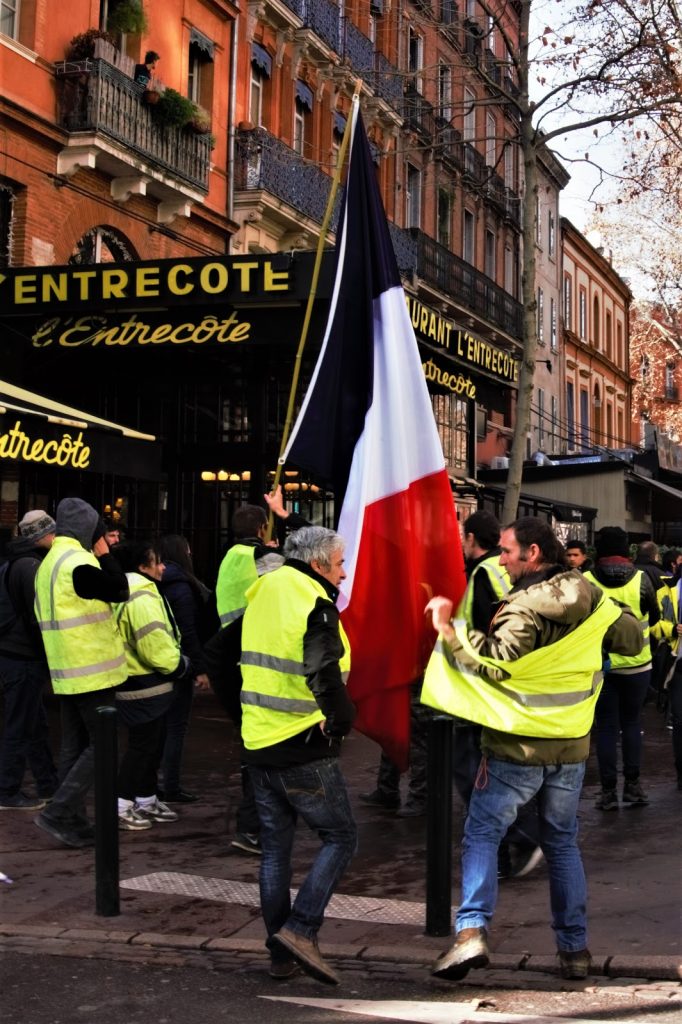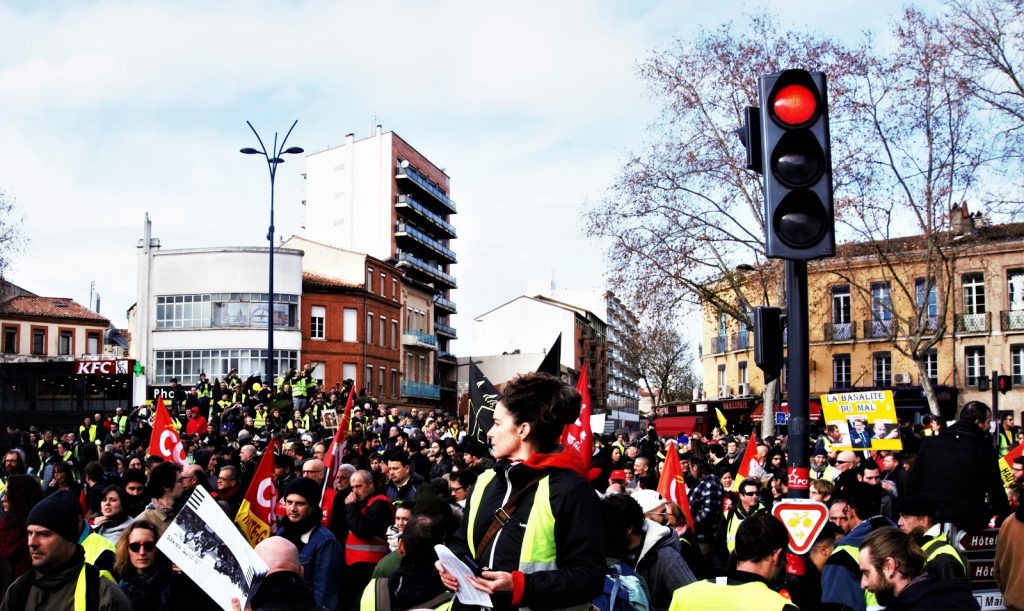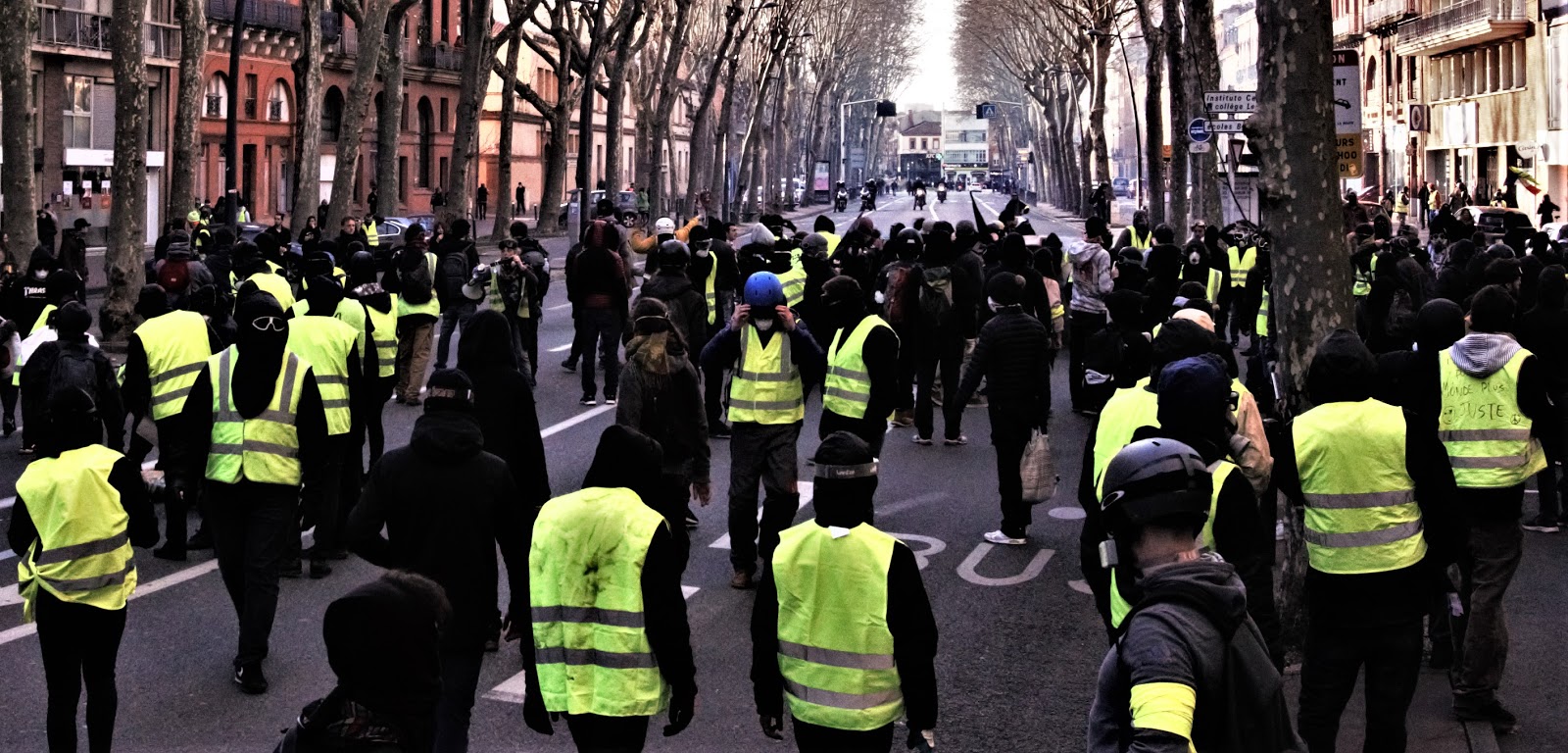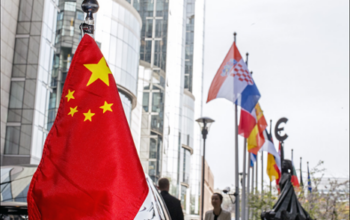Since the beginning of the gilets jaunes (‘yellow vests’) movement, a response to Macron’s planned fuel tax hike as environmental measure, it has become clear that the protests are not directed against green policies. The increasingly expensive fuel prices were merely the drop that made the barrel of social injustices overfull. In the wake of this revolt against neo-liberal policies references to the French Revolution of 1789 peak through in the discourse of newspapers and on the streets. But who – or rather why – are the gilets jaunes, and what do they have in common with 230-year old revolutionaries?

Do You Hear the People Sing?
Mass protests and revolts can be confusing, especially when they are led by a diverse, leaderless movement such as the gilets jaunes, leaving many underlying structures undiscovered until, with time, they surface. What first had been perceived as opposition to rising fuel prices, soon revealed much larger magma chambers of anger at social injustices, disillusionment with party politics, and dissatisfaction with France’s ‘arrogant’ ‘president of the rich’.
The existence of the people’s frustration and its eventual eruption should not have come as a surprise, however. The prelude to the gilets jaunes already began in 1983, when Mitterand’s government imposed austerity policies leaving the people worried about the state of their social protections. Since then the French welfare system has been increasingly dismantled by the following governments in which the Macron administration is merely the latest one.

All the same, Macron having been elected by many as the lesser of two evils and his failure to emphasise with the regular people have not contributed to defusing concerns. During his election campaign, Macron portrayed himself as a politician different to the established career politicians of previous governments. Once elected, he – not very surprisingly – turned out to be just one more privileged mainstream politician by instantaneously amending the wealth tax (ISF) and continuing on the path of neo-liberal policies.
His unfortunate history of condescending statements towards working class people such as ‘You don’t scare me with your T-shirt. The best way of paying for a suit is to work’, or that it were easy to find a job if only one tried since ‘[e]verywhere I go people say to me that they are looking for staff’ have not helped in the least to create an image of Macron as the people’s man. In fact, especially in rural areas there is a lack of employment opportunities and Macron’s austerity project includes the cutting of 100 000 more jobs in the public sector. The people feel overlooked and ignored by Paris, and it is not only the poor who struggle with high prices of i.e. fuel but also the middle class.
We no longer want this system of exploitation.
We no longer want people having to sleep on the streets.
We can no longer count our money, be in debt by the tenth of the month.
And we are millions who are in this situation.
(Gilets Jaunes leaflet)
The Figure of he King and Rhetoric of Revolution
The gilets jaunes movement, sparked by an attempted environmental policy directed at those who already have troubles making ends meet instead of the actors mainly responsible for pollution, the big industries, is a heterogeneous mass. While uniting people with different backgrounds and expectations without a clearly defined leadership, and in part being targeted by right-wing groups seeking to use it as platform for their ideology, the protests have some clear general objectives. Their demands range from higher wages and social security payments over better (free) public services and a fairer tax system including the reintroduction of the ISF to more direct democracy and the resignation of Macron.

If you go to the city centre of any French city on a Saturday you will encounter a crowd of people with drums and flags, many of them wearing their high-visibility vests. And if you stop listening to the chants of ‘ Macron! Démission!’ (Macron! Resignation!) you might every now and then pick up a reference to the French Revolution. And indeed, since the beginning of the protest comparisons to the revolution of 1789 have multiplied. The yellow vests that the movement owes its name to involuntarily reminds of the sans-culottes: the ‘culottes’ (pantaloons) were a symbol of aristocracy in 18th century society, thus, the sans-culotte represented the anti-elitist movement of that time much like the gilets jaunes with their high-visibility vests which can be seen not only as a sign of distress (used e.g. in the event of a car accident), but also as a symbol of the working class, are the French anti-elitist movement of today.
And even though the socio-economic circumstances of today and 230 years ago are not the same, the themes are. Both the French Revolution and the current wave protests can be linked to an anger over high living costs (indirect taxes on i.e. salt then causing the price of bread to sore, Macron’s fuel tax now) and favouritism towards the wealthiest 1%, as well as dissatisfaction with a king/ president who is out of touch with the regular people. Or as a gilet jaune put it: ‘This is the beginning of the revolution. We are not in 1789, we’re not going to cut off heads but we want that Macron resigns […] In 1789, the aristocracy was about 1% of the population. That is the same percentage that the ISF applies to.’

Funnily enough, Macron is reported to have said that ‘in French politics what is absent is the figure of the king which I think basically the French people did not want dead.’ He could not have been more wrong. After all, the French Revolution, although France relapsed into authoritarianism with Napoleon, endowed the people with sovereignty. Sovereignty in so far as that they could hold their representatives accountable to guarding social justice and the equality of the people. Moreover, the constitution of 1793 degreed that a law if opposed by at least 10% in half of France would not be adopted. These principles and achievements of the French Revolution – social justice, equality, accountability and more direct democracy – are the objectives of the gilets jaunes. And more pragmatically, according to sociologist and president of the Fondation maison des sciences de l’homme (FMSH), Michel Wievorka, the comparison with the revolution provides the protesters with a legitimating rhetoric that every French(wo)man can related to, and that thus unites an otherwise diverse movement.
by Merle Emrich
Photos Credits
all photos by Merle Emrich, All Rights Reserved
Related articles:










